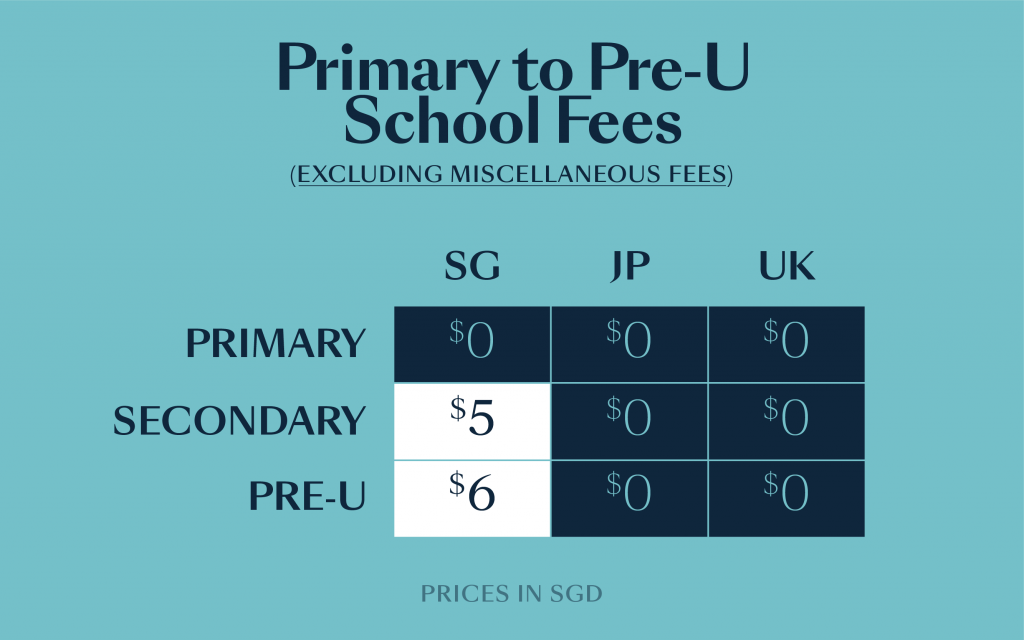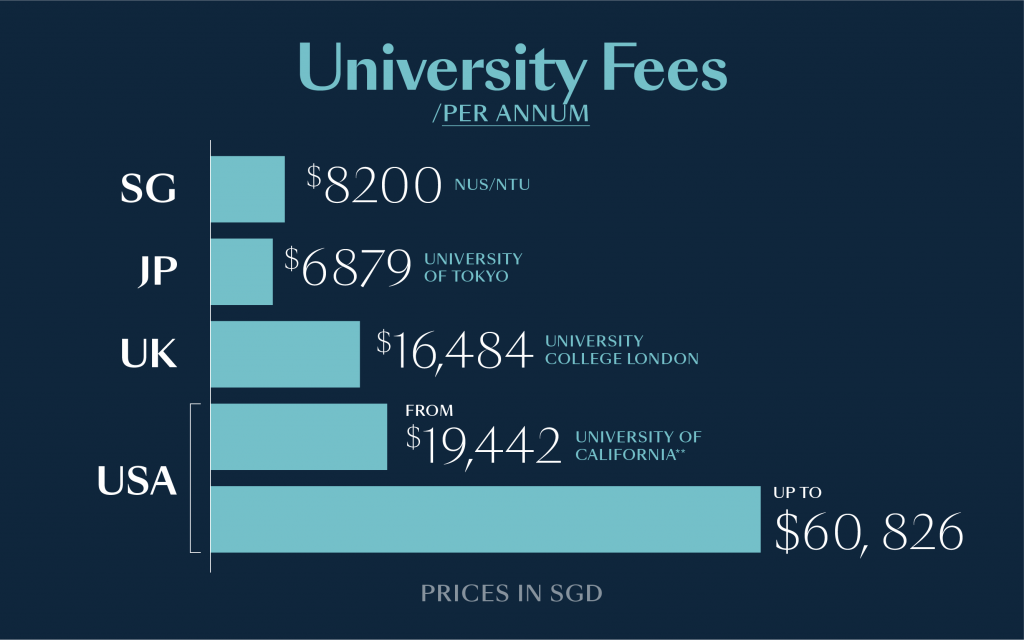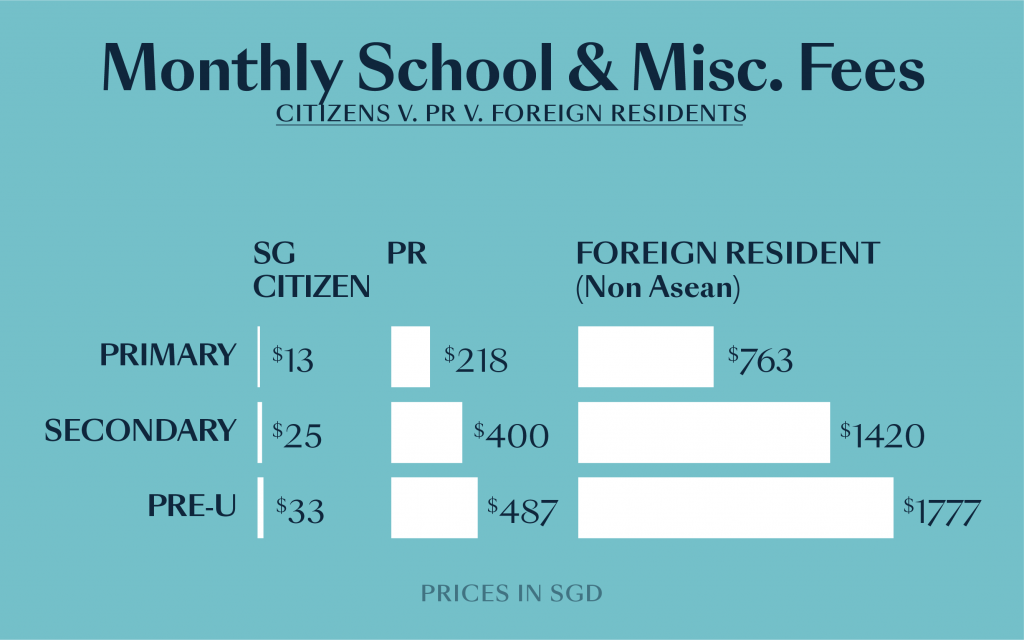Every so often, a letter would arrive from MOE, and my mother would toss it into the tray of bills without a second glance. Meanwhile, my own contact with ‘student finance’ was largely confined to signing Edusave forms so I could go rock-climbing. Naturally, I did not read those forms, and thus have no idea how much I spent.
Mainstream news outlets like The Straits Times often focus on how ‘highly-ranked’ Singapore’s universities are or how well our students test at PISA’s annual math audits. But let’s look at how much ‘An Education’ will cost you.

However, the numbers are slightly deceiving in this case because Singapore students can tap into their Edusave accounts to pay for extra-curricular activities, whether it be sports, arts, or debating.This is not the case in the United Kingdom or the USA, where the cost of such activities can be borne by students’ families. According to a report by the UK’s Department of Education, there’s a ‘participation gap’ between low and high income families. Some 40% of families report that they have shelled out for extra-curricular school trips and programmes.

Let’s say, for example, that you are a Chemistry undergrad. The cost of a bachelor’s degree from NUS would be S$8,200 per annum. This is slightly higher than Japan, but significantly lower than the S$16,484 one pays in the UK or the S$10,442 one would pay to attend the University of California—that is, if you’re actually living in California. For non-California students, this number balloons to an eye-watering cost of S$60,826.37, not including housing expenses and beer money.
With such high fees, it is no wonder that student debt has become a highly-politicized issue in America.

It is an article of faith amongst certain Singaporeans that our government is more generous to foreigners than to locals. This sentiment, although popular, has very little basis in fact.
The truth is, the average Singaporean pays only a fraction of what PRs and foreigners pay for their kids’ education. In fact, the fees for PRs and Foreign residents have been steadily rising over the years as part of a government policy to reflect ‘the privileges of citizenship’
For PRs, the monthly school and miscellaneous fees for secondary school students increased from S$220 in 2017, to S$400 by 2020. For Foreign residents, it increased from S$970 to S$1,420 in the same span of time. This adds up to at least S$17,040 per year, per international student. This is quite different from countries like the UK, where citizens do not receive any special subsidies or privileges. Japan also collects fees for extracurricular activities, although costs vary.

University education is expensive. The good news is, universities offer a wide variety of study grants, bursaries and scholarships to help make ends meet. Some of them are reserved for those who perform exceptionally well, while others are open to anyone who is willing to fill up a form. As a rule, scholarships are merit-based, while bursaries are available for those who are financially needy.
In Singapore, the most widely-accessible form of financial assistance from the Government for undergraduate courses is the Higher Education Bursary/Higher Education Community Bursary, which provides up to $6,200 per annum depending on household income. Bursary amounts are higher for Medicine and Dentistry undergraduate courses. Besides government assistance, there are also financial assistance offered by the universities, self-help groups and private organisations that complement the government aid.
The UK is slightly better, but their bursaries are highly industry-specific. If you’re taking a degree related to social work, you are eligible for a generous bursary of S$9,331.39. However, nothing is available for students of law, economics, art, or engineering. These fields have no shortage of graduates, and hence, enjoy little to no financial assistance.
Even that is better than absolutely nothing offered by the University of Tokyo, which only waives admissions fees if there is a death in the immediate family.

In the UK or Japan, welfare is administered by local authorities like a) the school itself or b) the local education authority, which operates under the local council’s auspices. This means that some benefits might be a little hodge-podge. Gov.uk, the official government website, directed readers to get help with school uniform costs from the London Borough of Brent, but Brent’s website does not offer any indication they would help to pay for said uniforms. In nearby Islington, school uniforms are provided for with a S$269 grant, but there is no assistance for transport.
This is not to say that local councils do a poor job of providing support. (i.e. Islington’s low-income secondary school students, for example, also enjoy a S$539 bursary). It’s just that, what support you receive often depends on where you live. In Singapore, the financial assistance is administered by the school, and there is just one form to submit. You would get the same assistance whether you live in Boon Lay or Pasir Ris.
Probably not. Germany, for example, offers free tertiary education, and you can take as many degrees as you want. However, such generosity does have its downsides. The result is a lot of frivolous serial degree holders, whose lifestyles are paid for by taxpayers. I know of an undergraduate in Dusseldorf who abandoned her architecture degree just months before graduation to pursue a second degree in psychology.
Her parents were naturally distraught.
Singapore’s education system is not quite so laissez-faire, but it is generous, even by first-world standards. If we consider the wide variety of support on offer, education here is very reasonably-priced. You will not incur massive amounts of debt trying to get your degree, and there are plenty of options for the conscientious student who wants to fund further studies.
Of course, no education system is ‘perfect’ and there’s always room for improvement, but for now, Singapore gets an A+ for affordability.
This article was brought to you by the Ministry of Education, Singapore.






